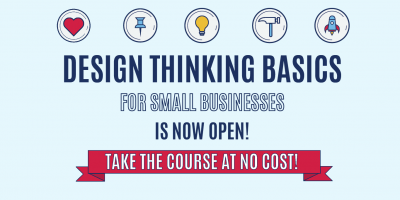COVID-19 has presented unprecedented challenges for small businesses. Owners have had to exercise their flexibility to pivot, rebound and recover, and new and improved business practices have subsequently occurred. Restaurants began offering curbside pick up service. Distilleries started making hand sanitizer in addition to their usual products. Many retailers began selling their products online so customers could shop from home.
The ever-evolving “new normal” requires innovative solutions that support growth and longevity. To make these adjustments and get into the mindset of solving problems creatively, many savvy business owners have turned to using the Design Thinking approach. Leading universities around the world teach this method, and companies such as Apple, Google, Samsung and GE have adopted it.
To support business owners as their priorities evolve and shift, the Business Resiliency and Innovation Center (BRIC), a special initiative of the Florida Small Business Development Center (SBDC) Network, has launched a new Design Thinking course.

The virtual course, offered at no-cost, has seven self-paced modules that include interactive activities and quizzes.
The Florida SBDC is the state-designated principal provider of assistance for small businesses. It employs certified professionals who provide no-cost consulting, training and research to help small businesses navigate challenges and achieve their business goals. The network has more than 40 offices across the state from Pensacola to Key West.
“Focusing on users’ needs and experiences is at the core of Design Thinking, and experiences and answers ultimately come from those utilizing the product or service,” said Ann Dziadon, senior course developer for the BRIC.
“Design Thinking has helped large and small business enterprises ignite creativity and growth,” said Allison Tyler Romer, director of the BRIC. “Gone are the days of the traditional business model of designing for and not designing with the customer. In a world that seems to be changing faster by the day, Design Thinking inspires owners to focus on customer experience and needs as part of their primary business strategy.”
Following is a brief overview of the Design Thinking process. Keep in mind that these steps are iterative and might happen multiple times, in any order, for maximum understanding and constant improvement.
- Empathize with users. First, explore connections with customers. Do research well beyond just becoming familiar with demographics. Make soliciting feedback and understanding concerns a regular part of your business process. This can be accomplished by pursuing casual conversations, reading reviews and testimonials, or creating a focus group or advisory board.
- Define users’ problems and needs. Owners must challenge their own assumptions about what a problem might be, and get to the root of the issue. Evaluate feedback and information solicited from customers. Analyze and synthesize the information gleaned from empathizing with clients. Create a specific problem statement. The problem is not “customers are impatient.” Rather, the problem is “spending more than x minutes in line causes customer dissatisfaction because they have such busy schedules.” The more specific the definition of the problem, the more specific the solution can be.
- Ideate. Go through the process of coming up with ideas. Ask questions that start with “How might we…?” The Design Thinking course provides several methods for generating ideas for possible solutions including brainstorming, mapping the journey of the customer step by step, and coming up with the worst idea possible to really stimulate outside-the-box thinking.
- Prototype. Test the solutions you brainstormed. This does not have to be time-consuming and arduous. It is a way to get feedback about possible ways to solve problems and can be as simple as conducting an informal survey on an online poll. “We are considering expanding our operating hours to reduce the wait-time in lines. Would you be more likely to visit us on Sunday after 1 p.m. or as early as 6 a.m. Monday morning?” Or “Pick your top two choices out of these five proposed new flavors for our ice cream.”
- Test. Based on all the research and feedback performed, implement your solution. Then ask for feedback, again. (See Step 1. Empathize.) Does your solution, work, or does there need to be redefinition of the problem and more ideation?
For more information and to complete the Design Thinking Basics for Small Businesses Course, visit the site.



